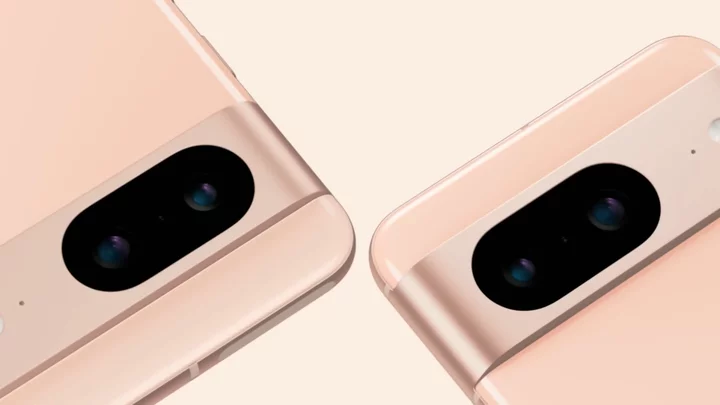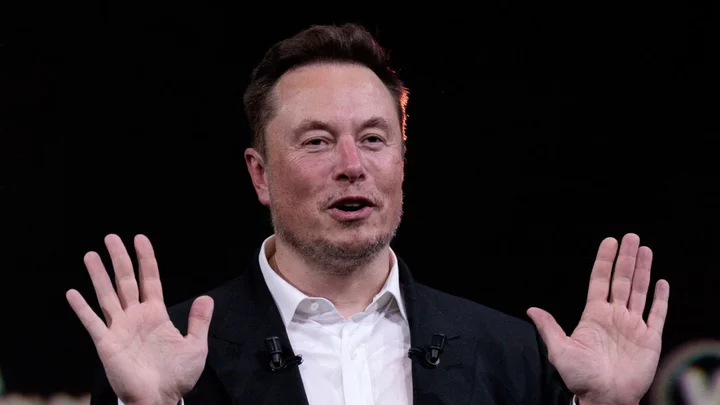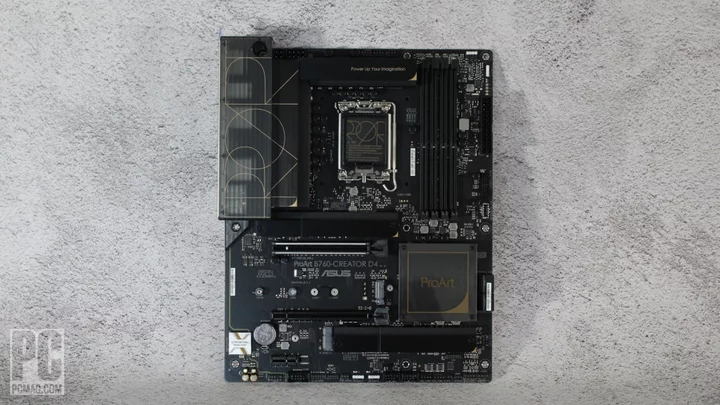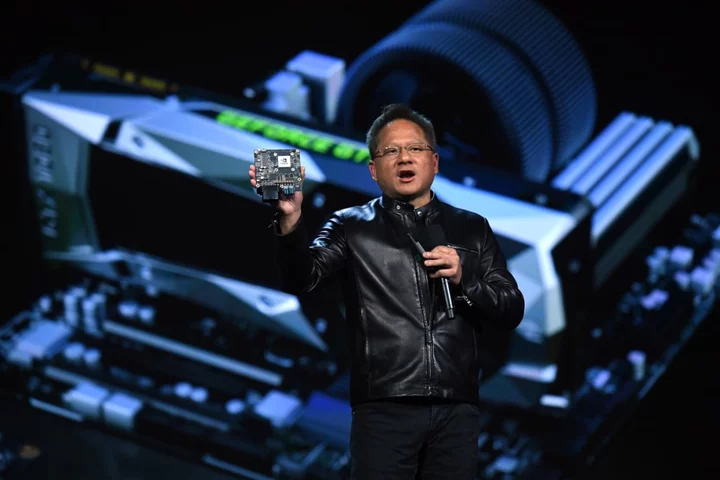
Start the new financial year protected
It's the end of another financial year! As we look toward 2024, EOFY is not
2023-06-16 19:29

Netflix Steps Up Videogame Challenge to Microsoft. The Cloud Is Its Battlefield.
The company said it is testing a gaming streaming service on TVs and personal computers. It's a first move toward expanding beyond its current mobile-games portfolio.
2023-08-15 16:52

TikTok: What are hidden codes and how to use secret emojis?
Welcome to the world of TikTok's hidden codes that unlock some really cool - but secret - emojis
2023-05-17 19:24

Generate custom AI images in seconds with this $20 app
TL;DR: Through Sept. 30, you can sign up for a lifetime subscription to Pixilio AI
2023-09-23 17:53

Holiday childcare costs up with fewer places available, survey finds
Fewer than a quarter of local authorities in England have enough holiday childcare provision for parents working full-time and costs have risen across Great Britain since last year, new research has found. Six weeks of summer childcare for each school-age child could cost almost £1,000, according to the Coram Family and Childcare charity’s annual survey. It said families in Great Britain face costs of £943 per child for this holiday period, which is £538 more than they would pay for after-school childcare in six weeks of term time. The research, based on surveys from local authorities in England, Scotland and Wales between April and June, found that the cost of holiday childcare has risen 3% since 2022. A place at a holiday club now costs an average of £157 per week – 2.3 times higher than the cost of an after-school club during term time, the charity said. Wales has the highest weekly price at £168, followed by Scotland at £157 and England at £156. While costs have risen, availability has decreased, according to the charity, with just 24% of local authorities in England saying they have enough holiday childcare for parents working full-time, down 2% on last year. Provision for eight to 11 year-olds has dropped by 7% on last year, with 23% of local authorities saying they have enough for this age group. The high of cost of holiday childcare is going to put a further strain on families’ already stretched budgets Megan Jarvie, Coram Availability of holiday childcare for disabled children in England has also continued to fall, Coram said, with just 5% of local authorities reporting they have enough to meet local demand, down from 7% in 2022. In Scotland, there has also been a drop in the proportion of local authorities reporting sufficient childcare – down 15% for 12 to 14 year olds, down 14% for children living in rural areas, down 12% for parents working full time and down 11% for eight to 11 year olds. No local authorities in Scotland reported having enough holiday childcare in all areas for disabled children, working parents, parents working atypical hours or children in rural areas. While Wales also has low levels of sufficient childcare for disabled children (5%) and 12 to 14 year olds (5%), the proportion of local authorities reporting sufficient childcare in all areas across all categories of holiday childcare, except parents working atypical hours and children in rural areas, has risen. Local authorities in Wales report the highest level of sufficiency of holiday childcare in all areas for parents working full time (18%), followed by four to seven year-olds and eight to 11 year-olds at 14%. Costs and availability of holiday childcare varies depending on where families live, the charity said, stating that parents in inner London pay up to 25% more than those in the East of England – £177 per week compared to £142. In the East Midlands, some holiday childcare places cost 104% more than the national average, while others are 58% less, Coram said. The charity is calling on the Government to extend childcare funding announced in the Spring Statement to include support during school holidays. Megan Jarvie, from Coram, said: “The high of cost of holiday childcare is going to put a further strain on families’ already stretched budgets. Even if families are able to afford these costs, many will struggle to find a place as we have found shortages right across the country. “Starting school doesn’t mean that childcare needs end. Instead, many find that it becomes more challenging to find options that are right for their family, particularly during the long school holidays. “New Government funding to help improve childcare options during term time is welcome – but families need childcare right through the year.” Coram is also calling on those in charge in England, Scotland and Wales to increase support for family information services to provide good quality holiday childcare information and ensure access to local provision that meets families’ needs, expand provision of school holiday activity and food programmes, and improve the accessibility of holiday childcare for children with special educational needs and disability (Send). Rapid price increases in essentials like food, housing and energy bills have left a growing number of the families we work with stretched and barely keeping their finances afloat Jamie Masraff, OnSide chief executive The Local Government Association (LGA) said “concerted investment and recruitment of quality staff” is needed to ensure correct provision for disabled children, and said it was “disappointing” that the Government had not extended childcare support to include summer holidays. Councillor Louise Gittins, chair of the LGA’s children and young people board, said: “While councils recognise the importance of ensuring there is sufficient provision available for children with Send, it can be difficult to ensure the right provision is available, particularly given the challenging situation that many providers face at the moment.” A Department for Education spokesperson said: “Our Holiday Activities and Food (HAF) programme, backed by £200 million per year to 2025, provides healthy meals, enriching activities and free childcare places to children from low-income families over the holidays. “We are also investing £30 million to test new and innovative approaches to short respite breaks for families of children and young people with special educational needs or disabilities.” Youth organisation OnSide called for the HAF scheme to be expanded to working parents, saying it is “increasingly hearing from working families who don’t qualify but are struggling to afford holiday clubs”. Its chief executive, Jamie Masraff, said: “Rapid price increases in essentials like food, housing and energy bills have left a growing number of the families we work with stretched and barely keeping their finances afloat. For too many, there’s simply nothing left to pay for vital summer childcare.” Read More Charity boss speaks out over ‘traumatic’ encounter with royal aide Ukraine war’s heaviest fight rages in east - follow live How to create a kitchen herb garden What is trail running and should we all be doing it? These are the women making waves in the cycling world
2023-07-18 15:47

KSI takes a jibe at Andrew Tate for calling his content 'cringe bullsh*t': 'D**k eating is crazy'
KSI and Andrew Tate get into a heated debate on social media
2023-05-22 15:23

Google Pixel 8: Every single thing we know so far
Pixel 8 rumors are taking center stage after the iPhone 15 series – now equipped
2023-09-19 18:00

Norgren showcasing motion control solutions at Automate 2023
LITTLETON, Colo.--(BUSINESS WIRE)--May 15, 2023--
2023-05-15 20:22

Assassin’s Creed Mirage Review
Assassin’s Creed Mirage ($59.99, available on console, mobile, and PC) sees the franchise forgo massive
2023-10-18 12:19

Elon Musk raises eyebrows with 'huge' change he's planning for future of X
As if changing Twitter's name to X wasn't enough, Elon Musk is now raising eyebrows with his plans to make the app dark mode-only. "It is better in every way,” the Tesla and SpaceX chief tweeted, confirming it would be bidding farewell to the iconic blue and white theme. Linda Yaccarino, who recently became CEO, has expressed that the app will move away from its short-form nature, and become a 'global marketplace for ideas, goods, services, and opportunities'. However, users are already in mourning before the transition has begun. Sign up to our new free Indy100 weekly newsletter
2023-07-28 23:18

Asus ProArt B760-Creator D4 Review
Designed for users of high-end creative apps, the Asus ProArt B760-Creator D4 motherboard ($229.99) is
2023-06-26 09:27

Tesla Veteran Appointed as Senior Vice President of Car Subscription Company, Autonomy
SANTA MONICA, Calif.,--(BUSINESS WIRE)--May 16, 2023--
2023-05-17 00:19
You Might Like...

Nvidia Stock Is Cheap on This Metric. Why It Could Rise More Than 50%.

Apple might launch some very powerful Macs at WWDC

China-based 'Flax Typhoon' hackers targeting Taiwan govt: Microsoft

The 10 Best PC Cases of Computex 2023

TikTok ‘does not want to compete with BBC for Eurovision final viewers’

Virgin Orbit to sell its manufacturing facility to Rocket Lab

Apple launches ‘Tap to Pay on iPhone’, letting people take payments on their device

Andrew Tate advocates for 'angry aggressive' men possessing 'warlord qualities', Internet calls him 'epitome of a douche bag'
